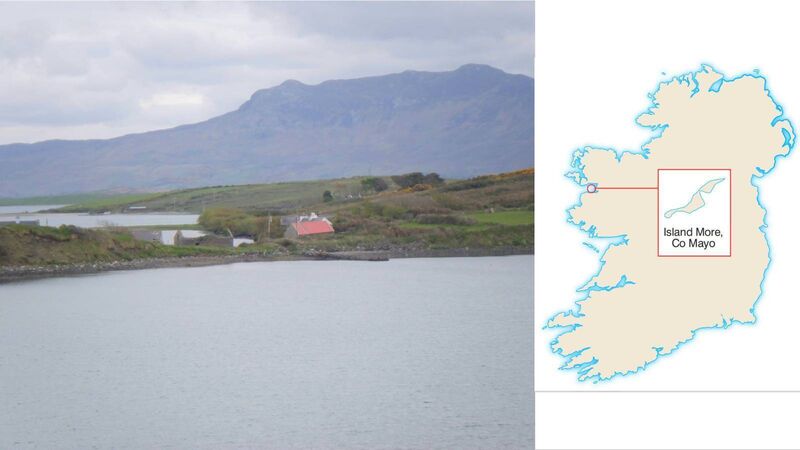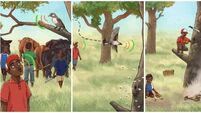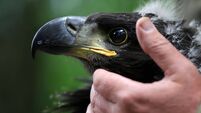Islands of Ireland: From Constantinople to Mayo's Island More

Island More, Clew Bay, County Mayo. Picture: Dan MacCarthy
Clew Bay’s role in international trade was highlighted a few decades ago by the discovery of Turkish coins on an island at the very edge of the bay, Island More. A resident of Clew Bay, Tommy Gibbons, discovered a small coin in 1957 on the beach on the island with what turned out to be Turkish script. In 1992, the National Museum, having been contacted by the Mayo News newspaper, identified the origin of the 10 para-piece as of Turkish origin bearing the image of the sultan Abdul Mejid with a date of 1839 to 1861. The obverse of the coin carried the sultan’s monogram called the ‘tughra’ which was a seal affixed to all official documents, and the reverse had the wording ‘Struck in Constantinople’. The sultan sent £1,000 to Ireland to alleviate the suffering of the Famine, which was £9,000 less than the sum he had wanted but was persuaded by British diplomats not to upstage the £2,000 sent by Queen Victoria.
The Mayo News reported that “an explanation offered for the presence of Turkish coins on Island More was that the island was frequently visited by foreign sailors to collect ballast for the outward journey of the great ‘wind-jammers’ which, up to the end of the previous century visited Westport Quay in large numbers to discharge cargoes”. Having unloaded the cargoes the ships would have needed to replace the deliveries with heavy material, probably rubble from the beaches of the islands. Hence, their presence on this and probably other islands in the vicinity is explained. Whether any trade or other contact took place between the locals and the sailors is not known, but it does make for interesting speculation.
Owing to a potentially treacherous route to Westport pier where the risk of beaching a ship on shallow waters was always present, ships required the services of a pilot to help them thread their way through the myriad of islands. One such pilot was Josie Gill of Island More who guided ships from the outer reaches of Clew Bay right up to the docks. The Clew Bay Heritage Centre possesses a plaster portrait of Gill which was created by the internationally renowned sculptress Helen Hooker O’Malley Roelofs. She was married to revolutionary and writer Ernie O’Malley who was mentioned here last month in connection with a War of Independence arms dump hidden on Island More’s neighbour Inishbee.
Another Gill, Dick (who died in 2020), was the last of the Newport Bay pilots.
He was born on the island and lived there until he was 24 (1953). In an interview Dick recounted the importance of Island More to him: “I live now away from the island that gave me birth and happiness. Each night before I go to sleep I visualise Islandmore and the Inishgort lighthouse winking every 13 seconds and far beyond the rolling seas. The fire is now gone out in my old house. How quiet and peaceful it was.”
As the name suggests, Island More is a relatively huge island and the fourth largest in Clew Bay’s necklace of islands. It is one of the westernmost of the central grouping of islands and has a couple of other huge neighbours in Collanmore and Knockycahillaun. Island More is linked to the latter island by a sizeable gravel bar as well as Rabbit Island to the west, but each is named in its own right.
Island More also has a small satellite in Quinsheen Island. The old Ordnance Survey maps show about a dozen buildings on each side of the link between Collanmore and Knockycahillaun and though technically on different islands, they would have formed one community. The hilly, 77-acre island’s population peaked at 88 in 1841 and in 2006 one person was recorded as living there.
Island More has had a resident biological wonder in recent years in the form of a huge lobster living in the boiler of a wreck. The Charles Stewart Parnell supply ship sank beside the island in 1928 and sometime in the 1990s a lobster was discovered to be living inside the apparatus where the misfortunate creature reputedly languished for about 30 years.
: No ferry. Kayak from Inishcottle near Newport.
: Mayo News 06/05/92; 06/10/2020









